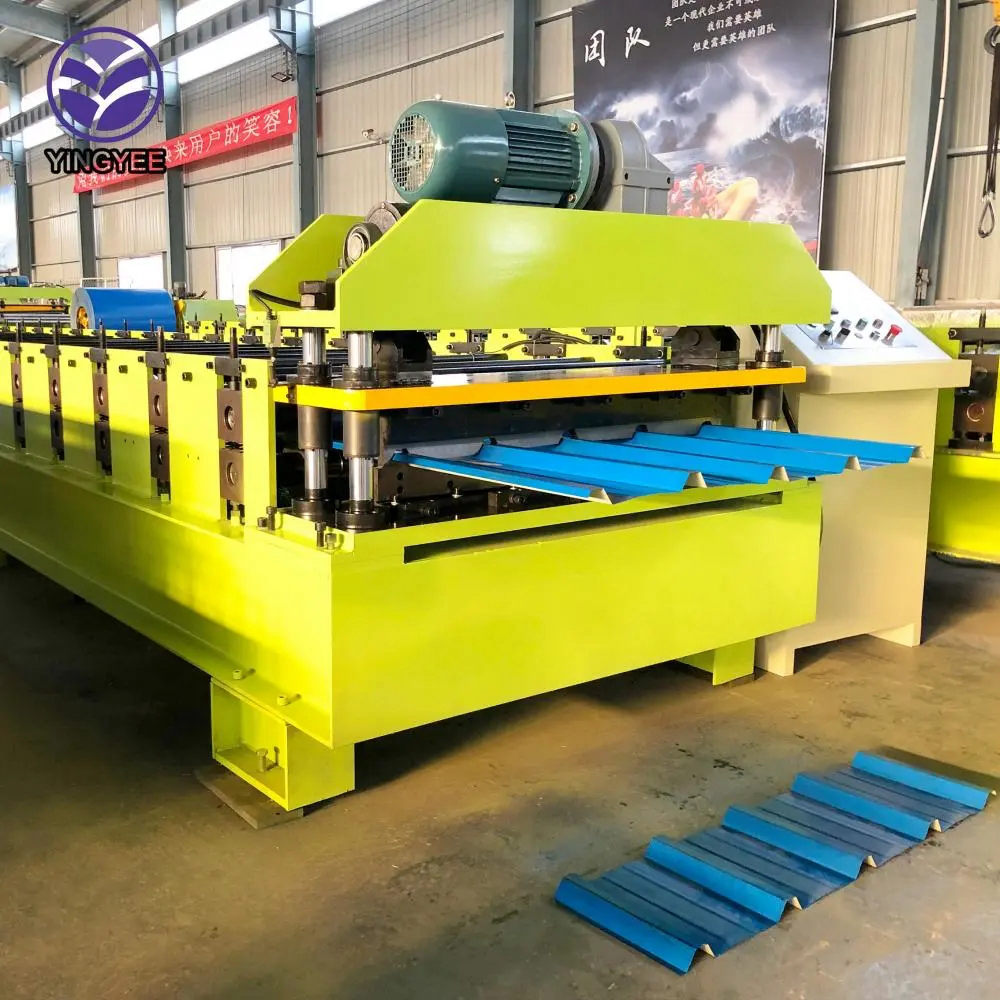
Standing Seam Forming Machine
The standing seam forming machine is an innovative piece of equipment designed for the production of standing seam metal roofing systems. These roofs are renowned for their durability, weather resistance, and aesthetic appeal. The standing seam system itself features vertical seams that interlock to provide a watertight seal, making it an ideal choice for various architectures, especially in climates prone to heavy rainfall or snow accumulation.
Overview of Standing Seam Roofing
Standing seam roofs consist of raised seams that run vertically along the slope of the roof, typically made from metal, such as aluminum, steel, or copper. This design minimizes the exposure of fasteners to the elements, reducing the risk of leaks and corrosion. The standing seams allow for thermal expansion and contraction, which is particularly beneficial in areas with significant temperature fluctuations. Furthermore, the sleek, modern appearance enhances architectural aesthetics, making it a popular choice for both residential and commercial buildings.
Functionality and Purpose of the Machine
The standing seam forming machine is designed to create metal panels that are precisely shaped and cut to the required specifications for installation. This machinery automates the process of bending, cutting, and forming the metal sheets, ensuring consistent quality and minimizing waste. It operates using a roll-forming method, where metal coils are fed into the machine and gradually shaped through a series of rollers into the desired profile.
1. Roll Forming Process The machine consists of multiple rollers that sequentially shape the metal. Each roller has a specific profile that progressively bends the metal until it achieves the final standing seam shape. This continuous process allows for long lengths of panel production without seams, resulting in fewer weak points and increased structural integrity.

2. Customizable Options Many modern standing seam forming machines offer flexibility in design options. Manufacturers can produce panels with different widths, heights, and profiles to meet the architectural requirements of various projects. This adaptability allows for customization based on client specifications, local building codes, and aesthetic desires.
3. Efficiency and Speed One of the significant advantages of using a standing seam forming machine is its efficiency. With automated processes, manufacturers can significantly increase production rates compared to manual methods. This efficiency translates into faster project completion times, which is crucial for contractors and builders operating on tight schedules.
Applications and Benefits
The standing seam forming machine serves a broad range of applications in the construction industry. Its primary use is in fabricating roofing panels, but it is also utilized for other architectural elements, such as wall cladding systems and fascia components. The benefits of utilizing this technology include
- Durability Standing seam roofs are incredibly resilient, able to withstand extreme weather conditions, making them a long-term investment for building owners. - Low Maintenance The design minimizes the number of exposed fasteners, reducing maintenance needs over time. Regular inspections and cleanings are generally sufficient to maintain the roof’s integrity. - Energy Efficiency Many metal roofing materials have reflective properties, which help reduce energy costs associated with heating and cooling buildings.
Conclusion
In conclusion, the standing seam forming machine plays a pivotal role in the production of high-quality, durable roofing systems that meet modern architectural demands. Its ability to efficiently produce customized metal panels has made it an essential tool for manufacturers in the construction industry. With the added benefits of durability, low maintenance, and energy efficiency, standing seam roofing continues to gain popularity among builders, architects, and homeowners alike. As technology advances, we can expect further innovations in standing seam forming machines, leading to even better products and solutions for sustainable building practices in the future.